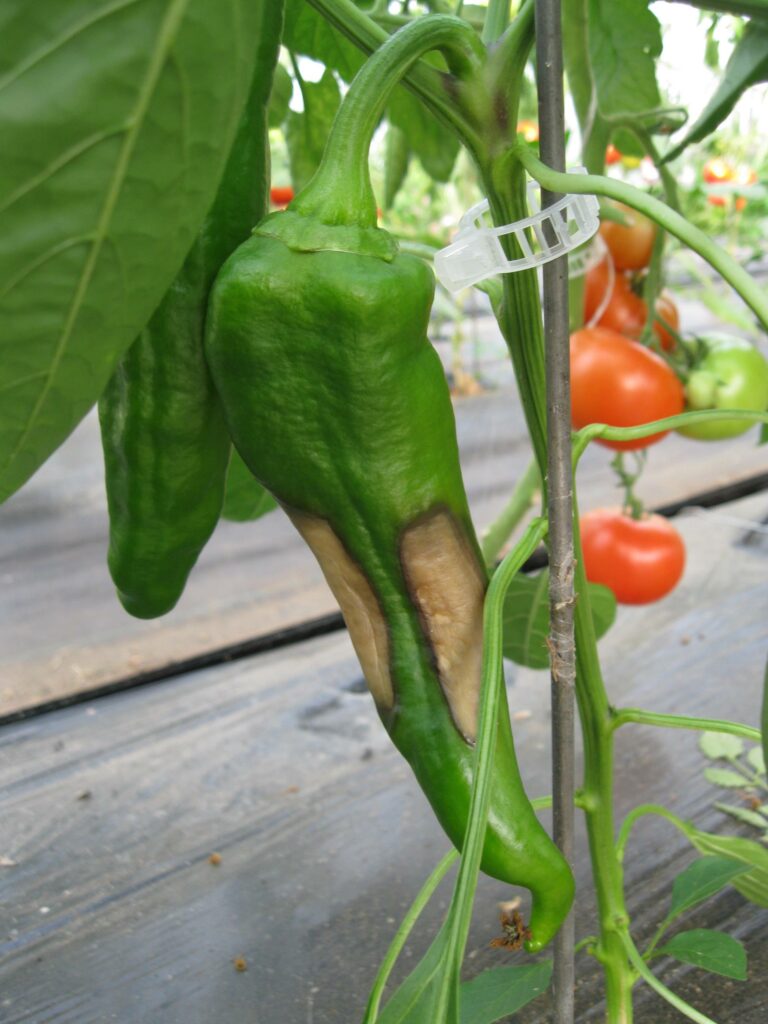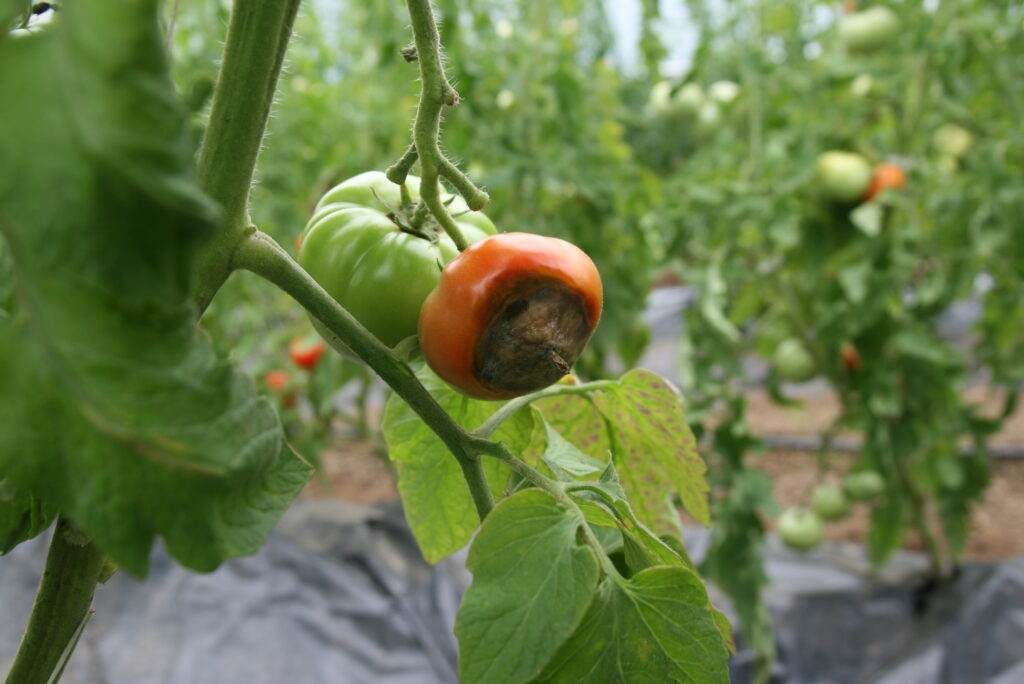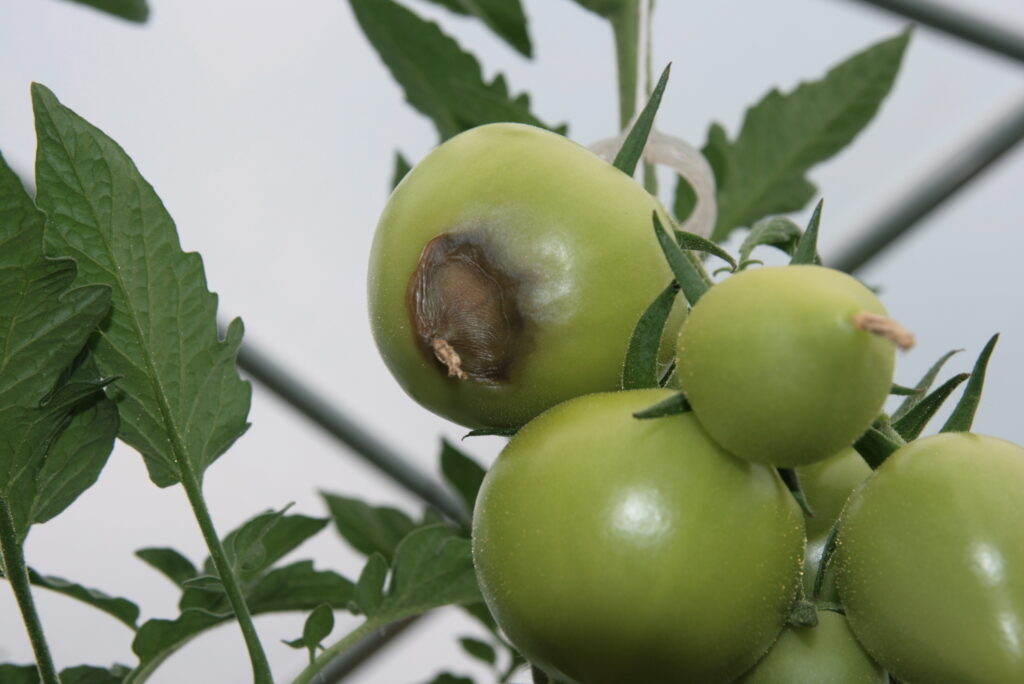
Blossom End Rot

Blossom end rot is a familiar sight for many tomato growers, but it can affect other crops as well, such as peppers and squash. Though it may look like a disease, and it sometimes allows infection by secondary decay organisms, blossom end rot is an abiotic growth disorder caused by stressful growing conditions — frequently attributed to too little, or sometimes too much, water.
Blossom end rot most commonly shows up on the first fruit of the year, possibly because plants have not yet gotten large enough to easily support fruit production.
Blossom end rot in pepper can be difficult to visually distinguish from sun scalding, as it often shows up on sidewalls of pepper fruits.
Poor pollination in squash/zucchini is frequently confused with blossom end rot. Like blossom end rot, poor pollination in squash is more common in newly fruiting young plantings, and can be influenced by poor weather conditions reducing pollinator flights.
Blossom end rot can be tricky to address until after the fact, as the stressful conditions that contribute to it occur as the fruit is developing, which can be quite a few days in advance of noticing the symptoms in tomatoes and peppers. Although blossom end rot is associated with low levels of calcium in the affected fruit, it is unlikely to be caused by a lack of calcium in the soil.


For a deeper dive into blossom end rot, see this great factsheet from UNH Extension.
Management options:
Strategies to avoid or reduce the risk of blossom end rot include:
- Aim to maintain consistent soil moisture.
- Choose resistant varieties (plum and pear type tomatoes are most susceptible to developing blossom end rot, while round fruit are less susceptible and cherry tomatoes are not known to develop blossom end rot).
- Consider shade cloth to moderate high light and temperature conditions in summer high tunnel or greenhouse growing.
- Aim for a balance between vegetative and reproductive growth — lush vegetative plants with little fruit set are at greater risk of developing blossom end rot.
- Maintain adequate soil calcium fertility — few New England soils are low enough in calcium deficiency to be a likely cause of blossom end rot, but regular soil testing is always advisable and will measure calcium.
